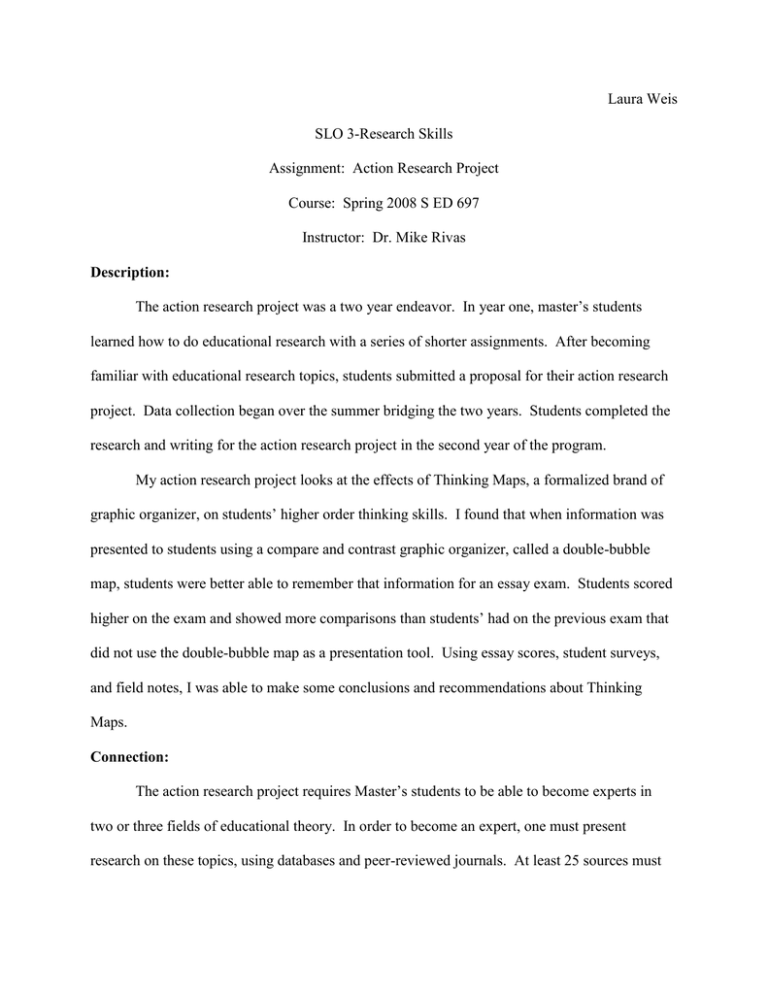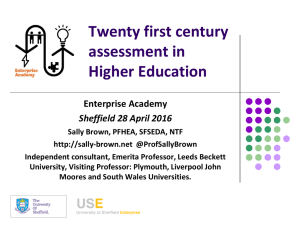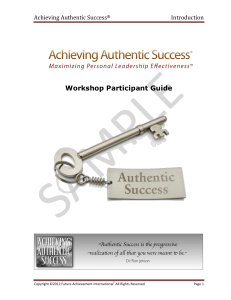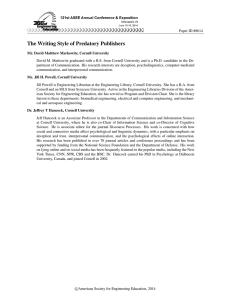SLO 3
advertisement

Laura Weis SLO 3-Research Skills Assignment: Action Research Project Course: Spring 2008 S ED 697 Instructor: Dr. Mike Rivas Description: The action research project was a two year endeavor. In year one, master’s students learned how to do educational research with a series of shorter assignments. After becoming familiar with educational research topics, students submitted a proposal for their action research project. Data collection began over the summer bridging the two years. Students completed the research and writing for the action research project in the second year of the program. My action research project looks at the effects of Thinking Maps, a formalized brand of graphic organizer, on students’ higher order thinking skills. I found that when information was presented to students using a compare and contrast graphic organizer, called a double-bubble map, students were better able to remember that information for an essay exam. Students scored higher on the exam and showed more comparisons than students’ had on the previous exam that did not use the double-bubble map as a presentation tool. Using essay scores, student surveys, and field notes, I was able to make some conclusions and recommendations about Thinking Maps. Connection: The action research project requires Master’s students to be able to become experts in two or three fields of educational theory. In order to become an expert, one must present research on these topics, using databases and peer-reviewed journals. At least 25 sources must be used in the action research project. In my action research project, I have over 30 sources. In addition to completing research using journals and other authors ideas, Master’s students also completed authentic research. Students were responsible for creating a study that used triangulation methods for validating data. Master’s students were also responsible for reporting the results of their study authentically and with expert authority. This assignment clearly demonstrates knowledge of theoretical research as well as authentic research. Reflection: By completing the action research paper, I have learned how to show expertise in a subject matter, how to completed authentic research, how to complete statistical data analysis, and how to present my findings. This project has taught me not only about my research topic, but about how to document my findings and present them in order accomplish goals and be taken seriously in the educational community. The findings of my research indicate that Thinking Maps are a useful tool for students to develop higher order thinking skills. This is knowledge that I can use in my classroom on a daily basis. This project will also be reflected in my teaching practice in the types of assignments that I will give my students. Not only will I incorporate Thinking Maps more often into my classroom, but I will give students assignments where they will have to research topics. I will instruct students how to identify if a source is valid based on the evidence presented by the source and the sources cited. Research skills are important for students to know and understand.

![Submission 68 [doc]](http://s3.studylib.net/store/data/008000926_1-fed8eecce2c352250fd5345b7293db49-300x300.png)



